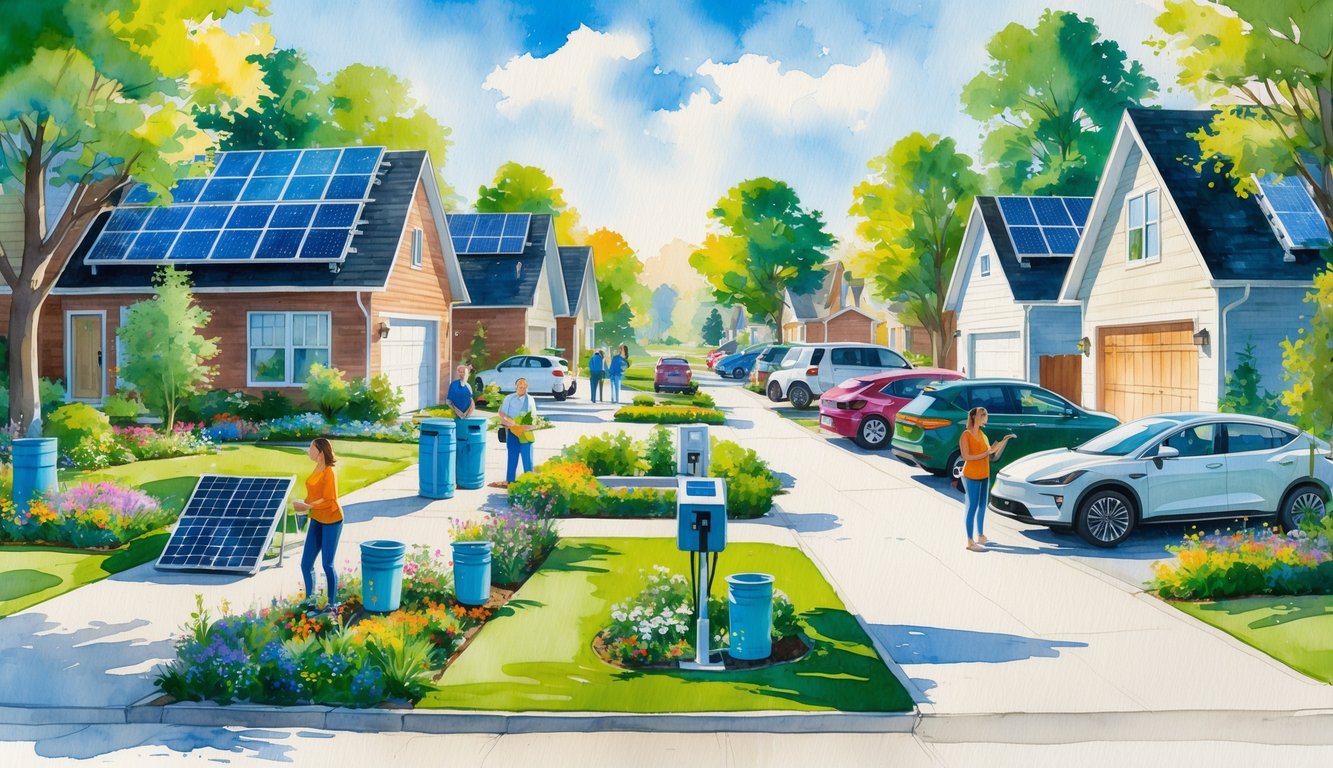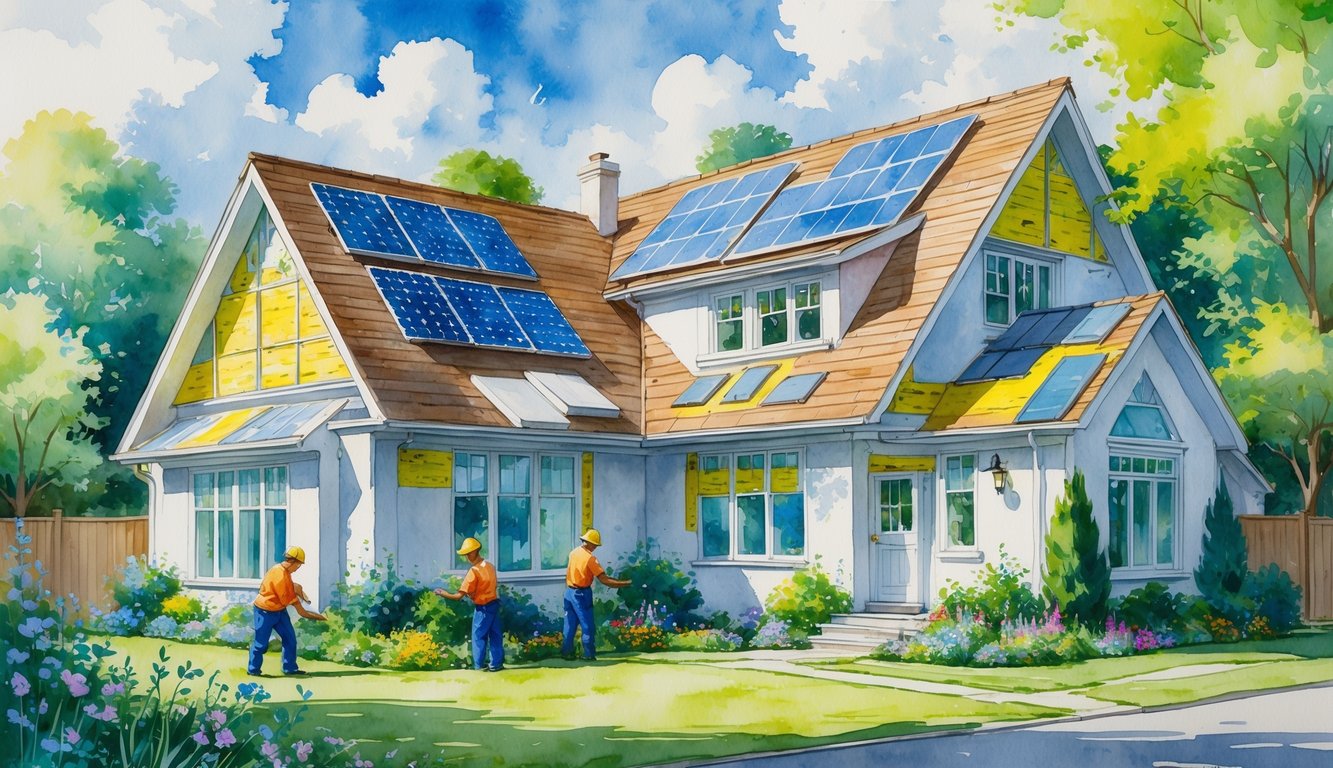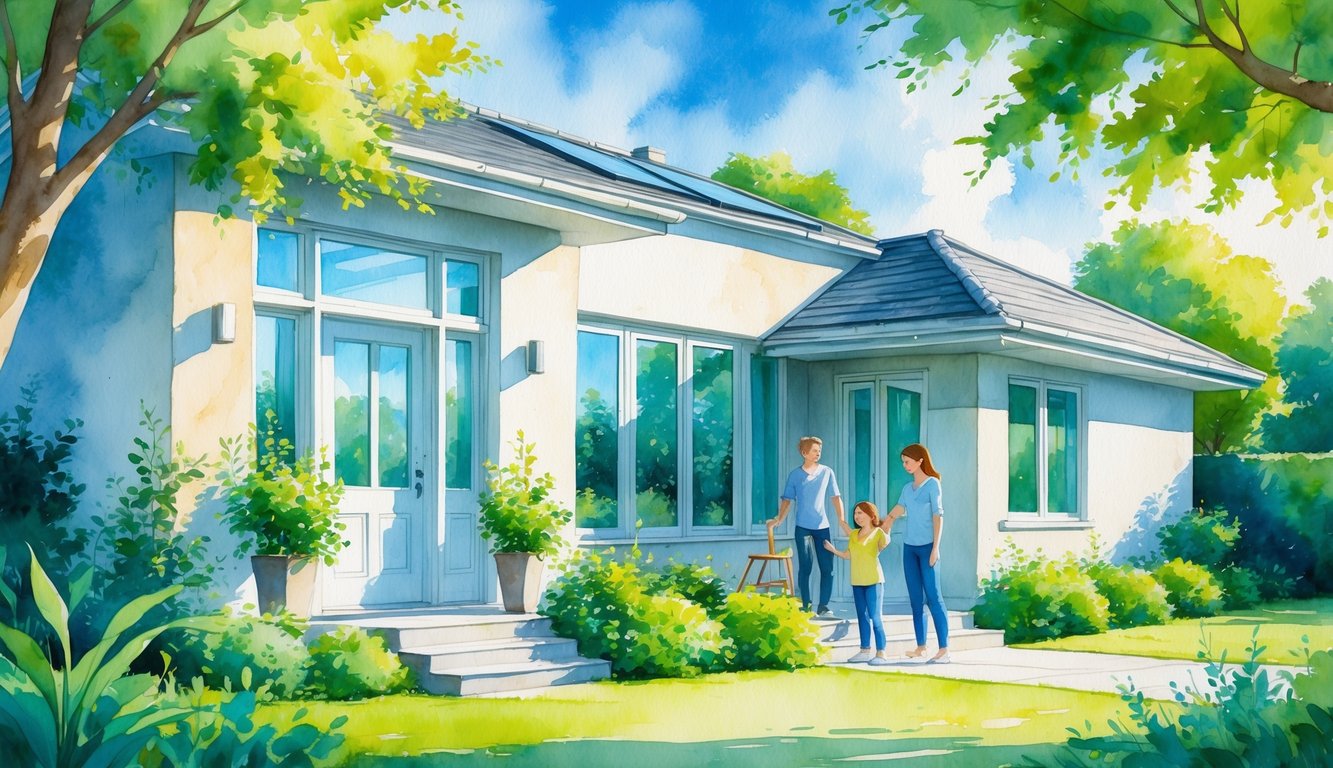
Smart Technology for Eco-Friendly Homes
Why do people treat thermostats like they’re sacred? I’ve seen perfectly good smart thermostats just sit there, untouched, while people complain about their bills. It’s wild. There’s all this tech—gadgets that could save you cash—and nobody talks about it unless you corner them at a party. I’m convinced half the waste is just because people can’t be bothered to set schedules or check if a window’s open.
Smart Thermostats for Optimal Energy Use
Every ad says “save money,” but does anyone actually know how much? Setting up a Nest or Ecobee takes maybe half an hour (unless you get stuck in the crawlspace—don’t ask), and then it just does its thing: learns your routine, tracks the weather, and adjusts so you don’t have to. ENERGY STAR says you’ll save 8% on heating and cooling. My cousin Brenda swears she did better, but she also thinks horoscopes are science.
Programming is dead. Now it’s all AI, sensors, real-time feedback—like your house is eavesdropping. It’ll even know when you leave and go into eco mode, so you’re not blasting AC for your cat. See for yourself. Pro tip: don’t trust default settings. I learned the hard way—my living room felt like a meat locker until I adjusted the temp bands.
Integrating Smart Home Technology
People used to laugh at smart bulbs. Now, I’ve seen the numbers—LED bulbs, occupancy sensors, plug-load management, all that stuff can knock 10-15% off your bill. They all talk to each other now: Zigbee, Z-Wave, Wi-Fi, whatever. If your Wi-Fi sucks, good luck—your lights will throw a rave every time the router restarts. Integration isn’t always smooth, but SmartThings or HomeKit can help wrangle it all.
Random aside: water sensors. Nobody brags about them, but the first time your basement doesn’t flood, you’ll want to. Certifications? Meh, but there are more third-party reviews now (sustainable smart tech for homes). My electrician rants about “vendor lock-in,” so maybe don’t buy everything from one brand unless you like surprise updates at 2 a.m.
Insulation and Weatherproofing for Efficiency

If you’ve ever yanked out old insulation, you know the pain—itchy arms, regret, and the creeping suspicion you should’ve just paid someone. Energy bills don’t care about your effort, though. If air leaks out, you’re stuck piling on sweaters and wondering where your money went.
Eco-Friendly Insulation Materials
Why is fiberglass still a thing? There’s better stuff—cellulose, denim batts—right there in the aisle, but everyone grabs the pink stuff. I had a contractor (who does his own taxes, so, you know, questionable) tell me cellulose is packed with fire retardant, made from 85% recycled paper, and somehow boosts R-value, at least according to some Minnesota lab. Ecobee’s blog, buried under greenwashing, actually admits you can DIY it and save money, but your elbows will hate you. And for the skeptics: insulation cuts heating and cooling bills by 15-20%. That’s not hype, it’s just… math.
If you hate fiberglass, eco-friendly home insulation like denim batts isn’t that expensive. It doesn’t itch, doesn’t need a mask, and supposedly smells “nostalgic” (not true, but it’s fun to pretend). Just cram it in tight—don’t toss it in like you’re making a pillow fort.
Sealing with Caulking and Weather Stripping
Every time I’m in the attic, I spot a window gap or a door that never shuts right. Not dramatic, but it matters—half an hour with a caulk gun, and suddenly my kitchen isn’t an icebox. Weather stripping? Should be on every shopping list, but nobody remembers. I tried those peel-and-stick foam strips and it actually worked—air stopped leaking, and my thermostat stopped cycling like it was training for a marathon.
Weird thing: some people insist you need to leave cracks so your house can “breathe.” Others say seal everything or you’ll get mold. Who’s right? No idea. I just do a little of both—seal the obvious leaks, run a dehumidifier, and watch my energy bills drop. It’s not glamorous, but it works better than buying another “energy-saving” gadget off YouTube.
Upgrading Doors and Windows for Energy Savings

Why do people paint their doors bright red but leave ancient, leaky windows in place? Heat just whistles right out, and nobody seems to care until the bill arrives. Upgrading doors and windows doesn’t just save energy—it makes your house quieter, safer, and, if you care, bumps up the property value. Plus, the bill drop is real.
Installing Energy-Efficient Windows
Swapping a window sounds easy until you try it. I did it once—bruised thumbs, a lot of swearing, and now I pay pros. Here’s the bit nobody tells you: old windows can lose 30% of your heating and cooling energy. “Money out the window” isn’t just a saying, it’s literal—thanks, Department of Energy.
I’ve stood in hardware aisles comparing Low-E, argon, triple-pane, whatever. The sales pitch is dizzying, but if you check the NFRC ratings and those ENERGY STAR tags, you’ll actually get somewhere (see the Department of Energy’s page). DIY is risky—mess up and you’ll have drafts for years. Bonus: new windows kill outside noise, which is amazing if you live near leaf-blowers or, I don’t know, children.
Energy-Efficient Doors and Triple-Pane Options
Okay, so my neighbor keeps insisting new doors are just for “curb appeal”—like, sure, let’s slap lipstick on a drafty mess and call it a day. Personally, I found out the hard way: swap in a real energy-efficient door (I went for insulated steel, which, heads up, weighs a ton—nearly threw my back out), and suddenly the living room isn’t a wind tunnel. Weather stripping? Not optional unless you enjoy funding your utility company’s next vacation.
Triple-pane windows—yeah, I rolled my eyes too, but they’re not just for show-offs. The extra glass plus whatever mysterious gas they pump in (argon? krypton? does it matter?) actually made a dent in my heating bill. Eco Life Path swears you can’t skimp on pro installation unless you love that random whoosh of cold air every time a semi drives by. And why do contractors always get cagey when you ask about install costs? Suspicious. Anyway, it’s wild when the thermostat number finally matches what you feel in the room—like, why did nobody tell me this was possible?
Solar Power and Renewable Energy Solutions
Why did everyone on my street suddenly decide to slap solar panels on their roof? Not kidding, I counted six new installs last month alone. The price keeps dropping—one quote was under $2.50 per watt, which sounded fake but apparently isn’t—and then there’s all these government rebates. I keep thinking if I wait too long, I’ll just end up paying for my neighbor’s panels through my taxes anyway. Is that how it works? I don’t know.
Rooftop Solar Panels and Solar Energy
Now every morning I get blinded by sunlight bouncing off my neighbor’s solar array. They’re not as ugly as I expected (my uncle’s wrong, as usual). I called a few installers—two bragged about being “platinum certified” (what does that even mean?), and one tried to tell me batteries are mandatory. Spoiler: they’re not. After doom-scrolling through forums and actual stats, looks like solar can cut your bill by 40–70% if, and only if, your roof isn’t shaded by a tree you’re weirdly attached to. Tax credits are still a thing, 30% off, but who knows for how long.
Honestly, the whole process is weirdly anticlimactic. Panels come with 25-year warranties, but the pre-install wait feels like waiting for the cable guy—except you have to pretend you understand kilowatts. My neighbors keep flexing about their panel wattage now, which is apparently a thing. And yeah, most setups stay tied to the grid, because unless you’re living in a cabin, the city’s still gonna charge you “connection fees.” I bought the monitoring app; it’s… fine? I check it, get bored, forget about it for a week.